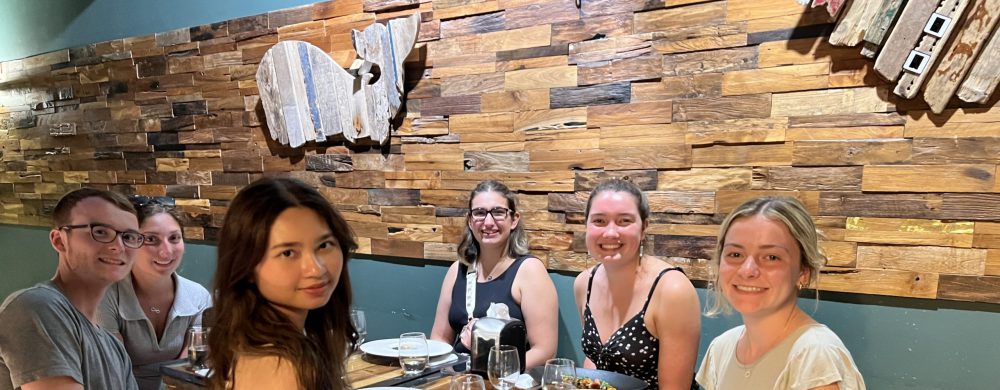In San Sebastian, yesterday was Saint James Day which meant the group did not have Spanish class at Lacunza. A few of the guys, including myself, took this opportunity of a long weekend to visit Bordeaux, France. Bordeaux was a small four hour bus trip away and when we arrived, I could feel the cultural difference easily. It was a Friday night, which in San Sebastian would equate to thousands on the street, live music, open bars, and overall commotion, it was the complete opposite in the main Bordeaux area. It was only eleven in the evening yet many places were closed or stopped serving any food, there were few out having wine, and it was eerily silent throughout the main roads. Nonetheless, I was still looking forward to what the city had to unveil.
Saturday was full of diving into Bordeaux’s history as the group took a 15 kilometer bike tour throughout the city where we had the privilege of seeing many pieces of Bordeaux’s ancient architecture. Our first stop was at the Bordeaux Cathedral which was erected in 1096! It’s hard to believe such a massive church (pictures below) has been standing for nearly a millennium and still has active services weekly! A few of us even had the privilege of attending the Sunday service and even receiving communion and listening to the beautiful choir. The acoustics of this building were unlike anything I have ever heard due to the extremely tall ceilings and the massive wall-to-wall organ on the back wall. Similar to the cathedral of San Sebastian, the one in Bordeaux was clearly a gothic style with a hint of Roman influence regarding the statues and sculptures surrounding and attached to the building itself. Most of the cathedral has been renovated with most of the current structure dating back to the 13th and 14th century when the gothic church style was extremely popular. The two main towers are an astonishing 81 meters tall which for the time of construction, is a rather impressive feat. An interesting fact about the cathedral is that King Louis VII and Eleanor of Aquitaine were married in the church in 1137. Adjacent to the cathedral is Pey Berland Tower which was built in 1440 and was to hold and display the 11 ton bell which was once apart of Saint Andre’s Cathedral which is about a mile away. Archbishop of France Pey Berland was the one who funded and designed this gothic style tower.
Moving on, we also visited two other very important pieces of architecture that define Bordeaux’s history and show the influence different culture’s had on the city. The first of which was the “Big Bell” or “Grand Cloche” in French which stood in the center of downtown Bordeaux and constructed in 1246. The city used to be mostly fortified with castles and grand walls guarding most of the inside of the city but King Louis XV wanted the city to be more open and requested most of the infrastructure of that manner be torn down. One of the few that stayed was the Grand Cloche which was used to hold juvenile delinquents and the bell is rung on special occasions. The other important piece of ancient architecture we saw was the Palais Gallien which dated back to the 3rd century and was built by the Romans. It was by far the most ancient piece of architecture in the city and was a marvel to see such a relic in person. Unfortunately, most of the amphitheater is gone at this point because during different French revolutions and wars, many pieces of it were taken apart and used to construct brick pathways because for obvious reasons, did not care to identify with roman culture. At some point, they realized they were removing ancient history and ceased deconstruction but at this point, it was far beyond restoration and only a few arches stand today.
This essentially wrapped up the bike tour which I found to be the most eventful part of the weekend. The only other planned activity that occurred was visiting the wine museum which was very interesting but somewhat overwhelming to a non-expert in wine. We enjoyed a freshly caught seafood dinner on Sunday night and wrapped up our stay with shopping on Rue Saint-Catherine, the longest shopping street in Europe! Overall, while I enjoyed my long weekend in Bordeaux, I felt San Sebastian fit my lifestyle and habits much better for a few main reasons. The first is one I mentioned previously which was the very silent streets and overall more quiet nightlife, I really enjoy the buzz and music of San Sebastian and have almost become accustomed to it. I also found the people to be less friendly and sociable towards tourist although it was nice that most spoke English. If I had to sum the city up in one phrase, I would describe it as, Bordeaux: A city full of rich culture, ancient history, wine and great food.
